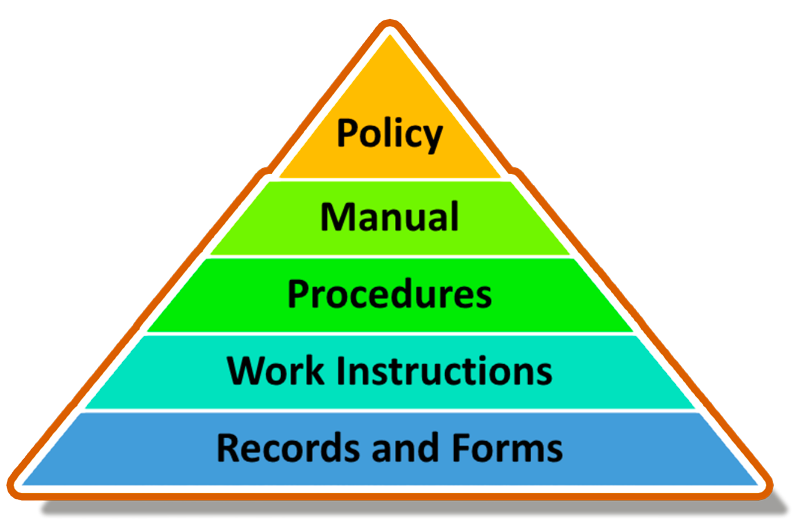
Understanding a Quality Management System (QMS)
A Quality Management System (QMS) serves as the foundation of an organization's drive towards consistent quality and customer satisfaction. It is an aggregate of processes, procedures, and practices that a company employs to ensure that it consistently meets the customer's requirements and adheres to regulatory standards. The overarching aim of a QMS is not just to meet quality standards but to exceed them, thereby improving customer contentment and streamlining operational efficiency.
Key Components of a QMS
Customer Focus:
The heart of the QMS is a deep understanding and commitment to customer needs. It involves meeting and exceeding customer expectations, as well as adhering to necessary legal and regulatory requirements to enhance customer satisfaction.
Leadership:
Effective leadership is crucial for establishing the vision and direction of quality management. Leaders at various levels are responsible for fostering a conducive environment where quality objectives are achieved.
Engagement of People:
The QMS emphasizes the importance of involving employees at all levels. An engaged workforce is essential for delivering value and enhancing the quality of products and services.
Process Approach:
Seeing activities and resources as interconnected processes helps in managing and improving them more effectively, ensuring quality consistency throughout the stages of production or service delivery.
Improvement:
Continuous improvement is a staple of a QMS. Organizations commit to ongoing improvement of processes, which is essential for maintaining high levels of quality performance.
Evidence-based Decision Making:
A QMS advocates for decisions made on the analysis and evaluation of data. Informed decisions tend to lead to better outcomes and performance.
Relationship Management:
For sustained success, an organization must manage its relationships with stakeholders such as suppliers, partners, and customers effectively.

QMS Documentation Dimensions and Hierarchy
ISO 9001 requires different types of information to be documented; however, not all information needs to be documented as separate documents. It is flexible, so that the organization to decide on the size of the documentation and the level of details documented. For example, small companies can include documented procedures in the QMS manual.
How To Create A Lightweight QMS Documentation Strategy
Sound technical documentation management is critical for any organization to succeed in today's competitive market. It helps users to navigate through complex products and services, mitigates the risks of miscommunication, and enables businesses to stay compliant with regulations.
However, managing technical documentation can be challenging, particularly as the amount and complexity of content grow. To ensure effective management of technical documentation, organizations need a system that is flexible, scalable, easy to understand and implement.
One approach is to build a robust quality management system (QMS) framework and apply it to your organizational needs. This section discusses how organizations of all sizes can develop and integrate a QMS framework to manage technical documentation efficiently. Get your coffee. Let's get started.
1. Define your organization's objectives and goals
Before developing a QMS framework for technical documentation management, it's essential to understand your organization's objectives and goals. Decide what you want to achieve and how you want to manage your technical documentation. For example, if your main objective is to improve customer experience, then your QMS framework should focus on easy-to-read, comprehensive, and accessible documentation. On the other hand, perhaps your needs for a QMS stem from a change management initiative and you need to get handle on how all the processes and integrations run across your organization. there are no doubt many other drivers for you to consider a QMS.
2. Identify your stakeholders
Who are the stakeholders in technical documentation? They may include developers, technical writers, product managers, and customers. Each of these stakeholders has specific requirements, expectations, and challenges when it comes to managing or consuming technical documentation. Gathering feedback from all stakeholders can help you develop a QMS framework that addresses their needs. The idea is that each organization is unique and in the end, the flavor your your QMS doc integration needs to work for your folks.
3. Develop Your QMS framework
Developing a QMS framework for technical documentation management involves creating processes, procedures, and guidelines for both document creation and revision. It's a continuous process that should be reviewed and modified regularly. Your framework should cover document controls like version control, document security, and review and approval processes. It should also provide guidance on style, tone, and formatting.
4. Develop a document management system (DMS)
One of the essential components of your QMS framework is a document management system (DMS). A DMS is software that allows you to store, track, and manage documents throughout their lifecycle. It maintains document security and access control and keeps the documentation processes organized. DMS tools can be either commercial products or open source solutions.
5. Train your team
Developing a QMS framework and implementing a document management system is not enough. Your team members must understand the processes, procedures, and guidelines outlined in your framework. It's vital to train employees on both the systems and the best practices.
Developing and integrating a QMS framework for managing technical documentation requires careful planning and execution. The framework must align with your organization's objectives, incorporate feedback from stakeholders, provide detailed guidelines for document creation, and incorporate a document management system. With a well-designed QMS framework and document management system, your organization can improve customer satisfaction, meet regulatory compliance requirements, and achieve operational efficiency, which will translate to increased profitability.
Conclusion
A QMS is essential for businesses seeking to establish quality as a core value. Through its adoption, a company demonstrates a commitment to quality, operational excellence, and continuous improvement, leading to robust customer relationships and sustainable business success.
Ready to Elevate Your Quality Standards For Doucmentation?
Don't let complexity hold you back. Contact Scratch Writing today and take the first step towards a streamlined, lightweight, and flexible Quality Management System (QMS) for your oganizational document management. Our experts are ready to guide you through every phase of development.
Get Started With Your QMS Documentation Today


